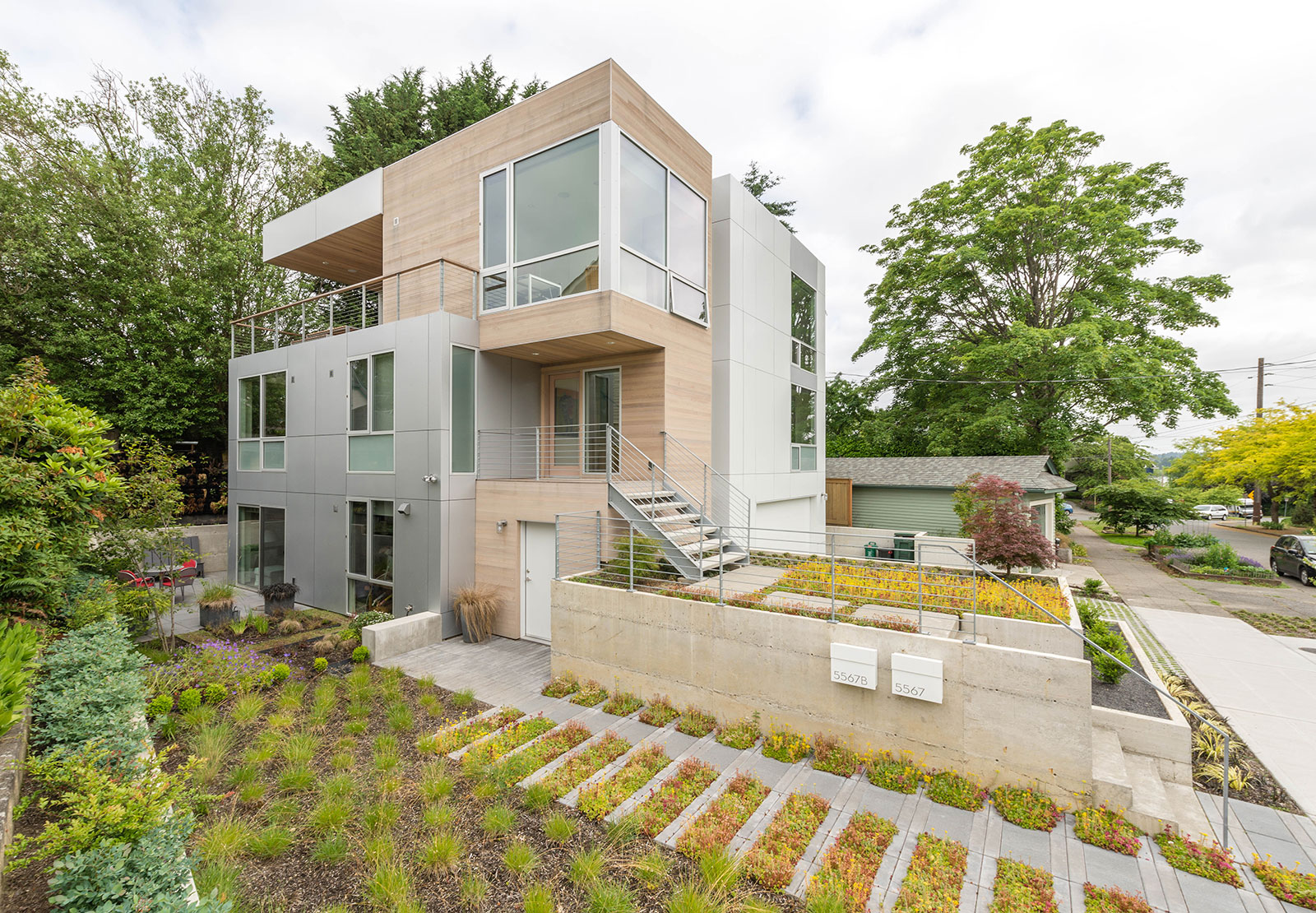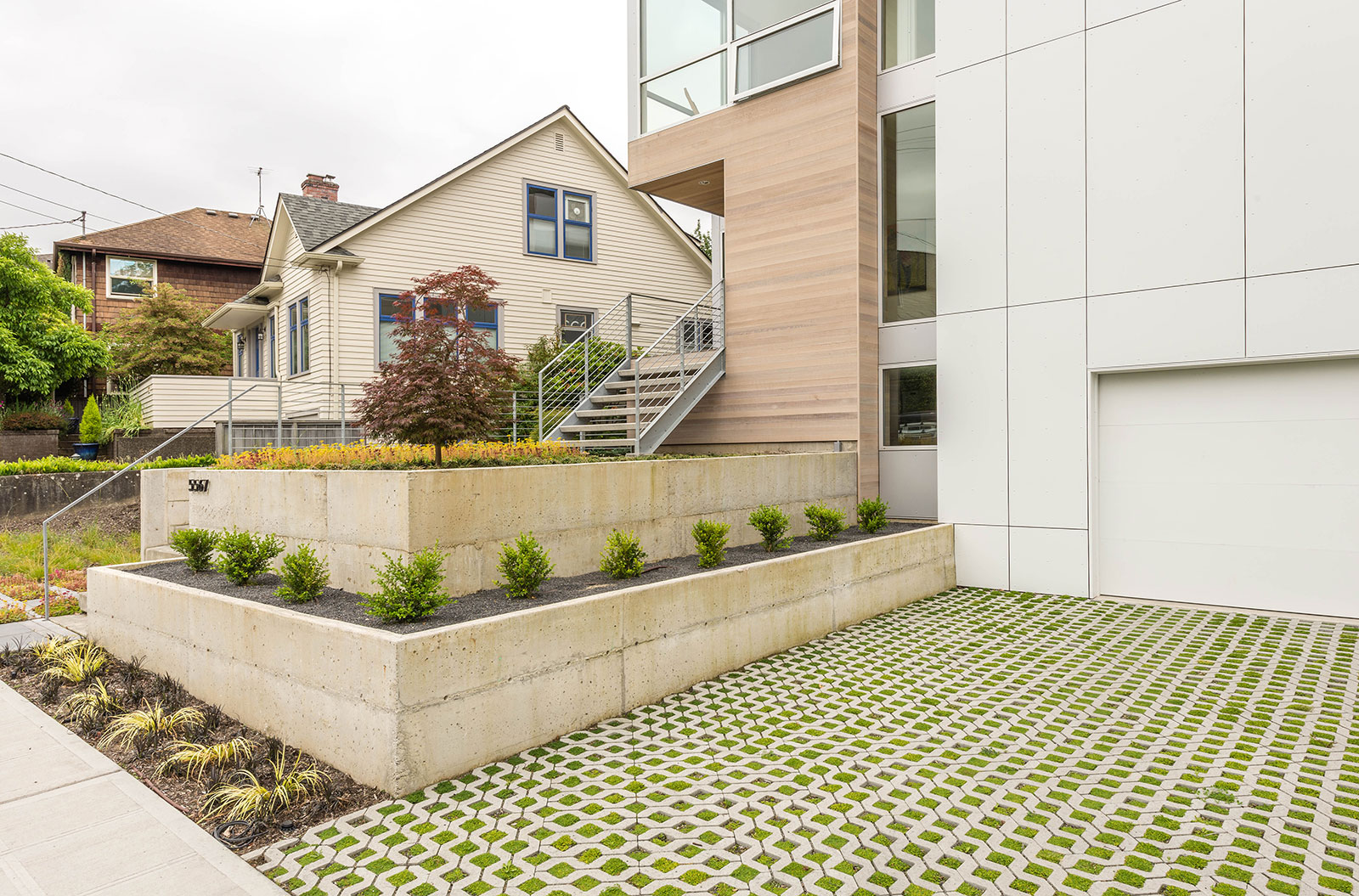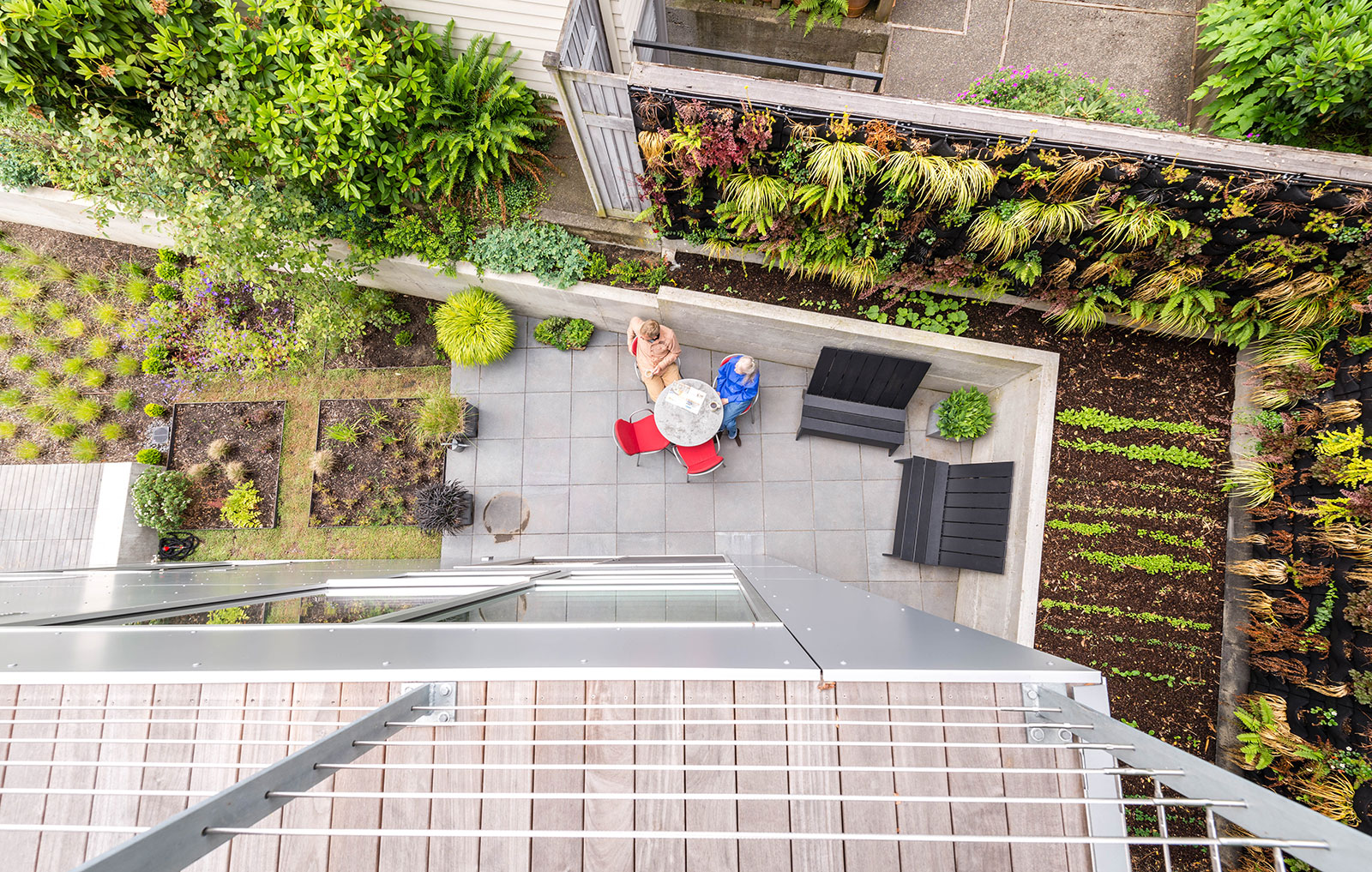
[Images by BUILD LLC unless noted otherwise]
With summer having arrived in the Pacific Northwest and the vegetation in full bloom, it’s an excellent time to review the Case Study House 2016 exterior design. Today’s post covers the envelope of the residence as well as the landscape and hardscape. An in-depth look at the CSH2016 interior package along with specifications and materials can be found here.
Like other examples in the BUILD Case Study House series, the CSH2016 is an exercise in simplicity. The design is pared down to its essence without removing poetry. Conceptually, the structure is comprised of three volumes, which fit together like a Japanese puzzle box. The largest volume is wrapped with a Pure White Oculus Aluminum Composite rainscreen system. The volume at the southeast corner is sided with horizontal T&G 1×4 clear vertical cedar with a light gray stain (Daly’s #70022) which wraps inside to define the office and entry spaces. The volume at the southwest, which outlines the accessory dwelling unit, is clad in a Silver Oculus Aluminum Composite rainscreen system. The material palette is tied together with a clear anodized aluminum window package by Marlin. Articulation is added to the volumes with recessed, covered decks and a slender bay at the front aligning with the interior stair. The roof is a white, single-ply membrane by Esary and the decks are an ipe, left unfinished to naturally silver over time.

The residence optimizes the allowable footprint of a tidy 4,300 square foot lot, which was a bit like fitting a square peg into a rhombus hole. This geometry leaves triangular slivers at each corner of the property, which are separated into different uses depending on the amount of direct sunlight they receive. The landscaping, parking strip and raised planters are all outfitted with a drip irrigation system hooked up to a rain sensor.

The landscapes and hardscapes were designed by the talented landscape architect Shaney Clemmons and built out by the hardworking crew at Calluna’s Gardens. Both brought fresh perspectives, expertise, and their knowledge of Latin to the design table. A big thanks goes out to Skyler and Taylor of Calluna’s who slogged through a lot of rainy days.

[Image by Shaney Clemmons]
The residence uses an inverted floor plan, which brings about the challenge of leading people to the common area on the upper floor without feeling like they’ve climbed two sets of stairs. This is accomplished with a landscaped terrace at the entry, which creates a sequence of experiences leading up to the front door. Tiers of vegetation like Green Beauty Hedge, Sedum, and Mondo Grass, along with featured plantings like Japanese Maples, create an enjoyable ascent to the front door.

The stepped concrete planters align with the house geometry and become an extension of the stair recess. Stepping the planters down also eliminates the need for guardrails and softens the front elevation of the residence.

The driveway uses Turf Stone from Mutual Materials, which satisfies the city’s stormwater infiltration code and brings color and texture to the front of the house. The pavers are cut and angled to be orthogonal with the house and sidewalk (good modernism lines things up!) and the cells are filled with Hernaria Glabra moss.
At the southeast corner of the house, the entry to the accessory dwelling unit is downplayed from the main entry. A combination of Piazza and Texada pavers from Abbotsford create a subtle walkway and feather into a landscape of native grasses and sedum. We’re big fans of sedum, as it keeps to a low carpet-like growth during the winter and springs to life with a variety of different shoots and blooms throughout the summer.

Continuing around to the south side of the property, steel lined planters divide the space into quadrants and accommodate a variety of flowering plants. The planter at the retaining wall above is lined with blueberries and lingonberries. At the southwest corner, a hardscape terrace of Abbotsford Texada pavers extends out from the accessory dwelling unit and becomes an outdoor room, with just enough space for a seating area and café table.

Greenwalls of Florafelt vertical pocket planters create a backdrop to the terrace, which are filled with a variety of plants including ferns, strawberries, sedum, kinnikinnick, and grasses, as diagrammed in the wall elevations below. Underneath the west greenwall is a small patch of earth that’s just the right size for an urban vegetable garden. Herbs and spices are located in planters on the upper floor deck closer to the kitchen.

[Image by Shaney Clemmons]

Because of the house massing and a tall row of cedars along the west property line, the north and west sides receive little direct sunlight. Ferns and other low-light plants are used at these locations to provide a pleasing backdrop without creating unnecessary yard-work. A retaining wall at the north property line jogs to provide a hidden recess for garbage, recycling, and compost.

[Image by Shaney Clemmons]
While the hardscapes are fixed components of the CSH2016, the landscapes and greenwall will continue to evolve and change over time. In line with the Case Study House series, we’ve used this project as a laboratory for ideas and experiments in exterior design that will inform our current and future client-based projects.
Cheers from Team BUILD





